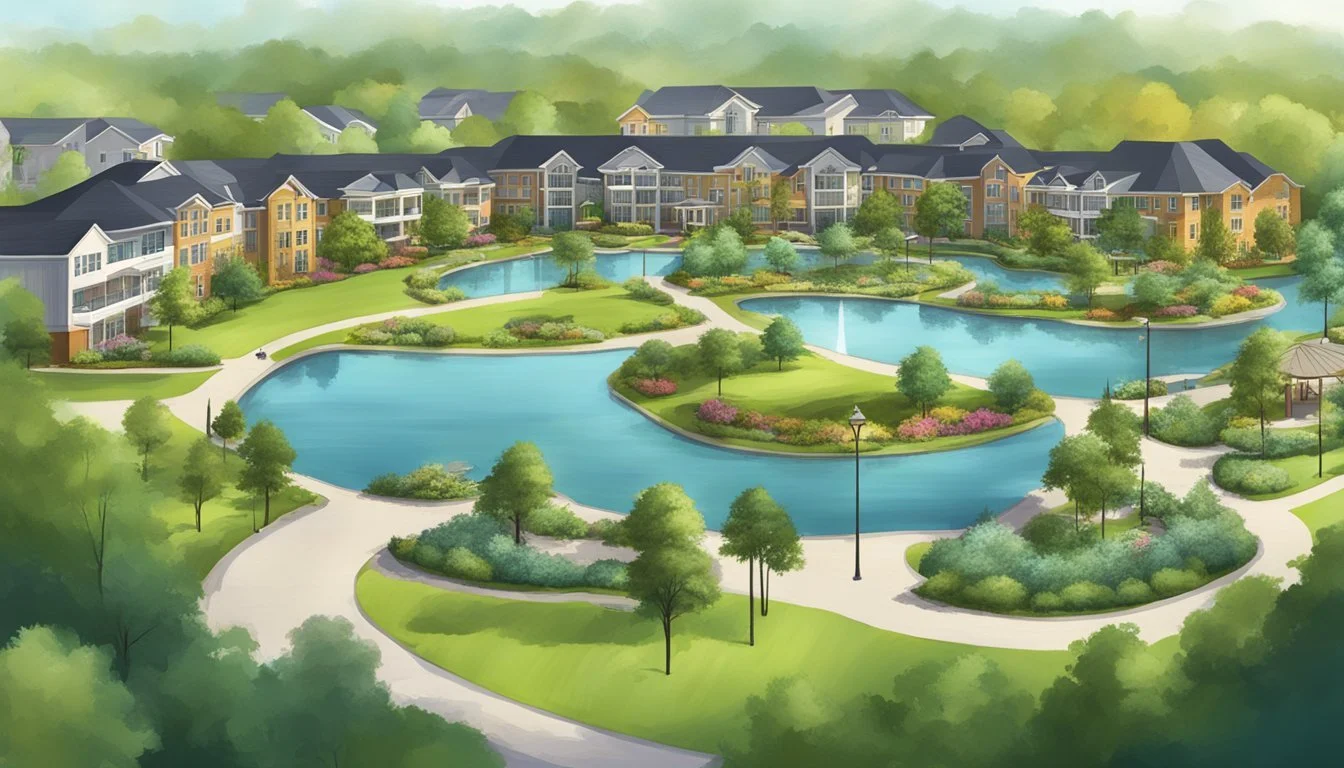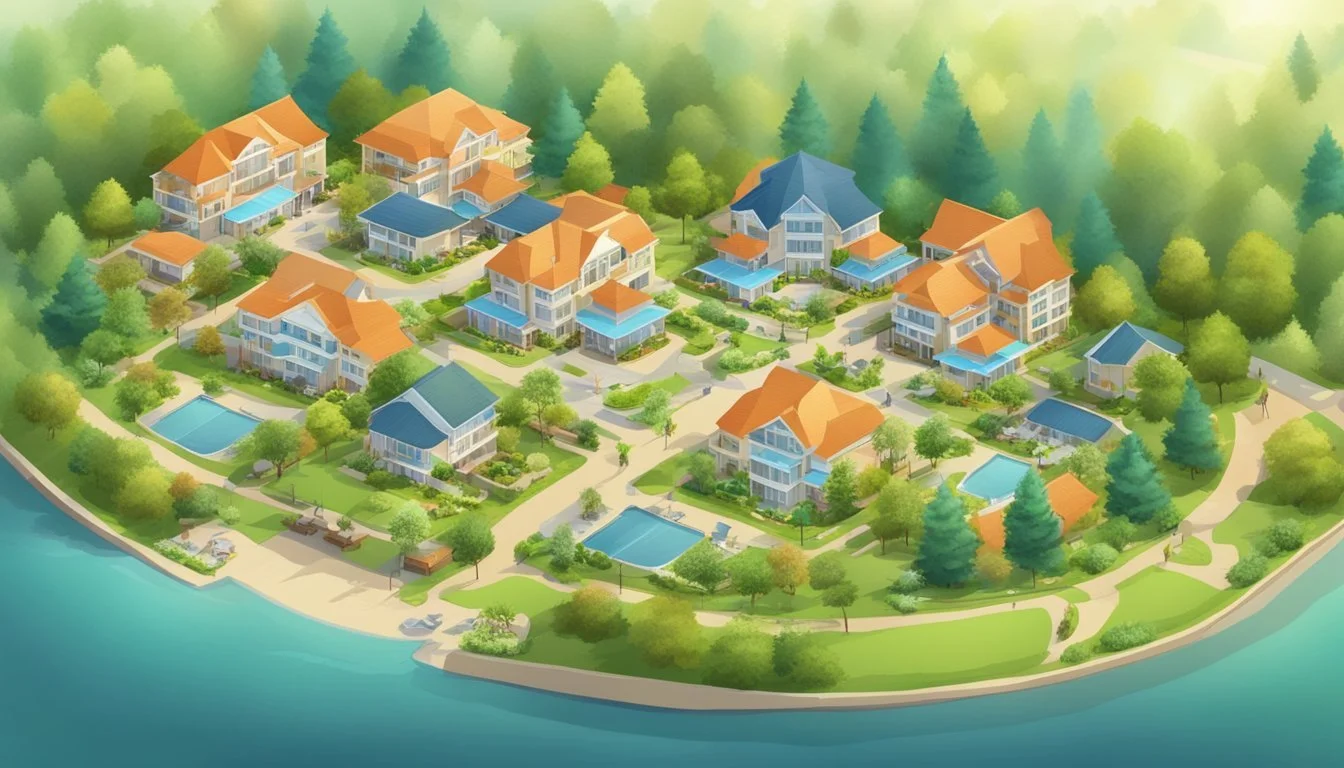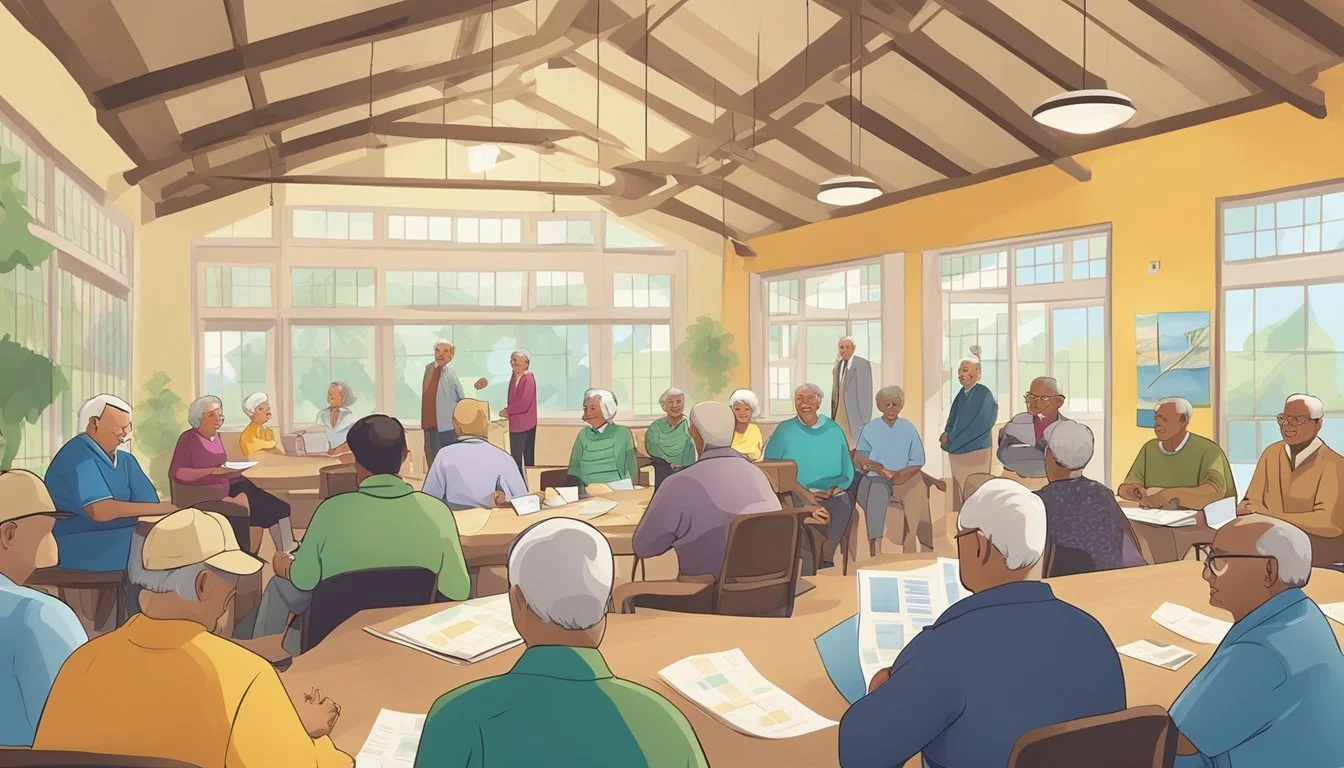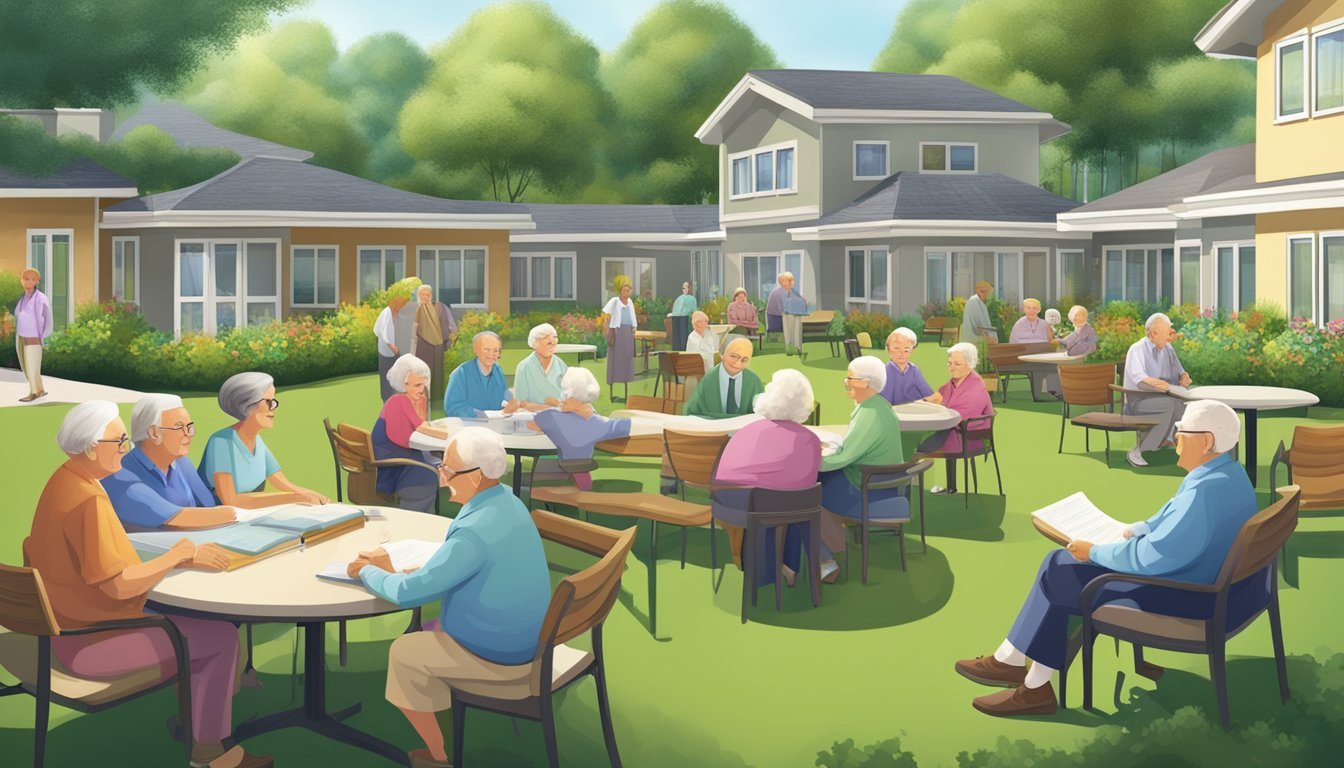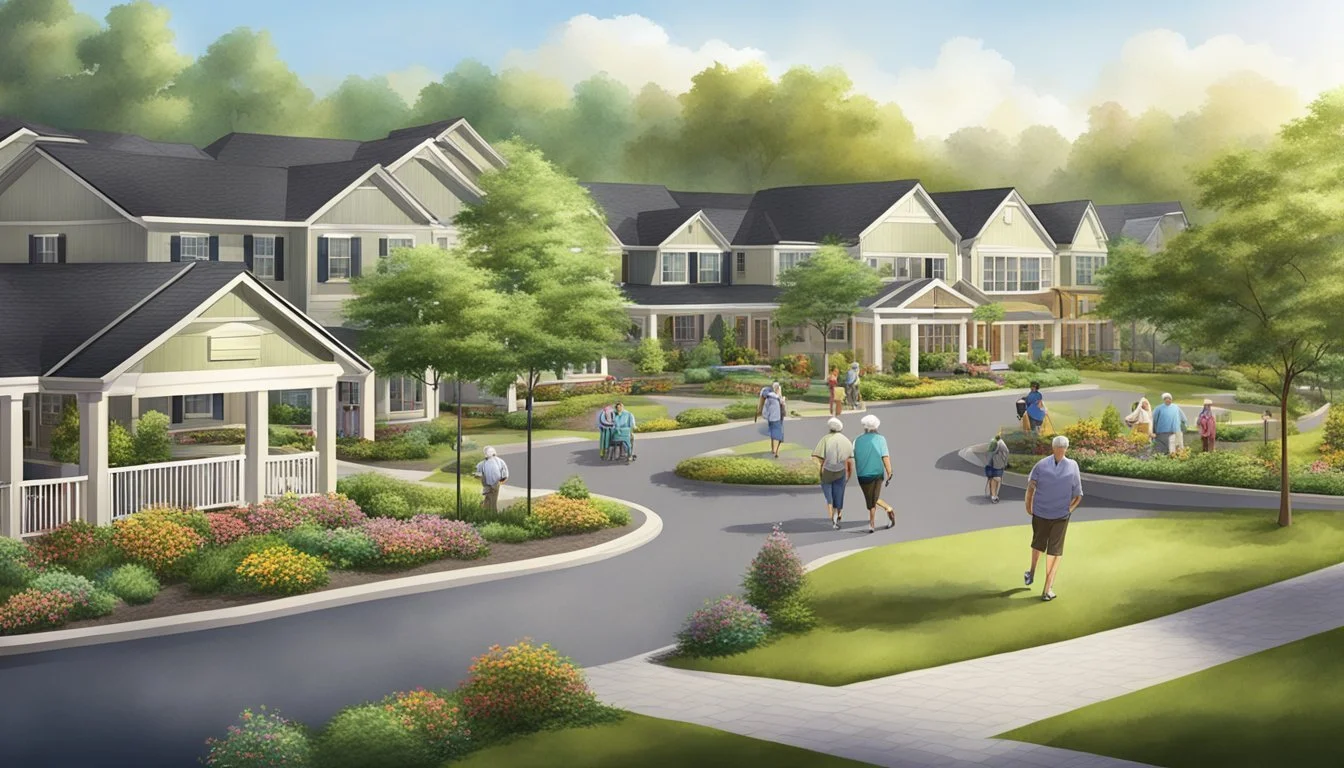Free Land for Senior Living
Unlocking Opportunities in Retirement Community Development
Securing free land for senior living presents a unique opportunity for developing retirement communities that cater specifically to the needs of older adults. As the number of individuals reaching retirement age increases, providing accessible and affordable living spaces becomes crucial. Some retirement communities offer single-level homes, making them more convenient for residents with mobility challenges, as noted by Forbes Health.
In the U.S., the surge in the elderly population highlights the necessity for innovative living solutions designed to support a thriving lifestyle. Forbes Health mentions that modern retirement communities often include features like lower light switches and no-step showers, which aid in creating comfortable and safe environments for seniors. By making use of free land, developers can reduce costs and prioritize investment in these beneficial amenities.
Furthermore, as noted by the University of Chicago's research, there is a significant potential market with millions of middle-income seniors expected by 2033. The development of well-planned senior living communities on cost-effective land can help address the needs of this growing demographic. These communities not only provide practical living arrangements but also encourage social interaction and engagement among residents, ensuring a better quality of life.
Understanding the Concept of Free Land for Senior Living
Free land for senior living involves designating land specifically for the development of retirement communities, offering various benefits to both developers and seniors. This approach can significantly impact the quality and accessibility of senior living options.
Defining Free Land in Retirement Communities
Free land for retirement communities refers to plots that are allocated by government entities, non-profits, or other organizations at no cost to developers who commit to building senior living facilities. These parcels often come with stipulations to ensure the land is used solely for constructing housing and amenities for seniors.
This development model aims to reduce the financial burden on developers. In turn, they can focus more resources on high-quality construction and amenities. The setting typically includes features like accessible housing units, comprehensive health and wellness facilities, and communal spaces, ultimately making senior living more attainable.
The Appeal of Retirement Communities for Seniors
Retirement communities are particularly appealing to seniors due to the combination of communal living and individualized support services. These communities prioritize accessible infrastructure, like wide hallways and emergency pull cords, allowing seniors to maintain independence while having immediate access to assistance.
Such settings also foster social and emotional wellness by providing numerous opportunities for social interaction, which is critical for mental health. Retirement communities usually include organized activities, clubs, and events designed to keep seniors engaged and active. This environment can significantly enhance the quality of life for aging individuals.
Evaluating Housing Options for Seniors
Choosing the right senior living option is crucial. Factors like cost, lifestyle, and care needs play a significant role in making the best decision.
Comparing Senior Housing Types
Senior housing options vary broadly. Independent living communities often cater to those 55 and older who don't need daily assistance. They offer amenities like social activities and fitness centers. On the other hand, assisted living communities provide help with daily activities, such as bathing and dressing, which can be vital for those with declining physical abilities.
Manufactured homes in 55-plus communities are affordable and offer a sense of ownership without the maintenance of a traditional home. Traditional housing options include renting single-family houses or apartments. Both allow seniors to live independently but might lack specific senior-oriented services and amenities.
Type Key Benefits Independent Living Social activities, active lifestyle Assisted Living Daily assistance, medical support Manufactured Homes Affordable, minimal maintenance Traditional Housing Independence, familiar environment
Downsizing and Transitioning to Senior Living
Downsizing can be a liberating yet challenging process for seniors. Moving to a senior living community often means leaving behind a large family home. It's essential to assess what personal belongings are truly necessary. Smaller living spaces in communities might require significant adjustments to lifestyle and routines.
Planning the transition carefully is key. Ensure that the new senior housing meets specific needs, from healthcare access to social engagement opportunities. 55-plus communities may offer various home styles, including apartments and manufactured homes, making it easier for seniors to find a place that feels like home while fitting their new stage of life.
Design and Amenities in Senior Living Communities
Senior living communities are carefully crafted to enhance comfort, wellness, and socialization for residents. Key features include lifestyle and comfort amenities, health and wellness facilities, and community spaces designed for social interactions.
Lifestyle and Comfort Features
Senior living communities prioritize comfort through well-thought-out design. Rooms and common areas feature natural light, ample space, and accessible furniture. These design choices foster a serene and welcoming environment.
Many communities boast dining options that rival those of upscale restaurants, ensuring a variety of nutritious meals. The presence of courtyards and landscaped gardens with abundant plants create tranquil spaces for relaxation.
Other essential amenities include pools for both recreation and therapy, and clubhouses that serve as hubs for activities and social gatherings. Security features like handrails and emergency alert systems are vital to ensuring safety and peace of mind.
Health and Wellness Facilities
Health and wellness need careful consideration in senior living design. These communities often include fitness centers with specially designed equipment suitable for seniors. Group classes, such as yoga and aerobics, promote regular physical activity.
Medical facilities within the community or on-call healthcare services ensure that residents receive prompt medical attention when needed. Mental wellness is equally important; counseling offices and spaces for activities like meditation are common.
Pool facilities not only provide recreational options but also support aquatic therapy programs. Green spaces and walking paths within the community encourage an active lifestyle and exposure to nature, which is beneficial for both physical and mental health.
Community Spaces and Socialization
A sense of community is embedded in the design of senior living spaces. Communal areas, such as shared dining rooms, libraries, and recreational rooms, facilitate social interaction. Well-designed clubhouses host numerous activities, from game nights to crafting sessions.
Courtards and outdoor areas provide scenic places for gatherings, exercise, or simply enjoying nature. The inclusion of multipurpose spaces allows for a range of social events, fostering a strong community spirit and alleviating loneliness among residents.
Dining options go beyond mere nourishment, offering opportunities for social dining experiences that help build and maintain relationships. These thoughtfully designed areas play a crucial role in enhancing the overall social well-being of residents.
Financial Considerations for Retiring in Free Land Communities
In free land retirement communities, financial considerations revolve around lease agreements, monthly fees, real estate taxes, and investment implications. Understanding these elements is crucial for informed decision-making.
Understanding Lease Agreements and Monthly Fees
Lease agreements in free land communities dictate the terms and conditions of living in the property. These agreements typically outline the duration, renewal terms, and obligations of both parties. It's essential to scrutinize these documents to avoid unexpected costs or obligations.
Monthly fees cover various services, such as maintenance, utilities, and amenities. These fees can range widely based on location, community amenities, and the type of housing. Prospective residents should budget for these recurring costs and consider their long-term financial impact.
Different communities offer varied fee structures. Some include comprehensive packages, while others may require à la carte payments for specific services. Clarifying what's included in the monthly fee can prevent surprises and help in accurate financial planning.
Real Estate Taxes and Investment Implications
Real estate taxes play a significant role in the overall cost of living in a free land community. These taxes vary by location and can affect monthly expenses considerably. Understanding local tax rates and potential exemptions for seniors can aid in accurate budgeting.
The investment potential of properties in free land communities should also be considered. Unlike typical real estate investments, these properties might appreciate differently due to the unique nature of the community and local market conditions. Prospective buyers should evaluate historical market trends and future growth prospects.
Additionally, some free land communities might offer tax incentives or rebates, which can enhance their attractiveness as an investment. Reviewing these financial benefits can provide a clearer picture of the real cost and value of settling in such communities.
Legal and Policy Framework
Developing senior living communities, including continuing care retirement communities, requires adherence to a complex legal and regulatory landscape. Key aspects include ensuring compliance with local zoning laws and adhering to federal protections against discrimination.
Navigating Rules and Regulations
Senior living developers must comply with a variety of rules and regulations to ensure the safety and rights of residents. These include local zoning laws that dictate where and how facilities can be built. In primary markets, there has been significant construction in both independent and assisted living units.
Federal laws, such as the Fair Housing Act, prohibit discrimination based on race, color, national origin, religion, sex, disability, and familial status. Specific provisions like those allowing age-based exemptions can apply to facilities for residents aged 55 and older.
Continuing Care Retirement Communities (CCRCs) face additional regulatory scrutiny. They must comply not only with housing regulations but also healthcare standards. Ensuring legal and regulatory compliance is crucial for developers to avoid costly delays and potential legal challenges.
The Role of Community Design in Senior Living Projects
Effective community design in senior living projects fosters wellness and independence among residents. Key aspects such as incorporating nature and innovative designs for aging in place, play a critical role in enhancing quality of life.
Incorporating Nature and Accessible Parks
Integrating nature within senior living projects provides numerous benefits. Access to green spaces, parks, and trails offers residents opportunities for physical activity and relaxation. Well-maintained walking paths and gardens can significantly reduce stress and improve mental health.
Parks should be designed with accessibility in mind. Features such as wide paths for wheelchairs and benches at regular intervals ensure that all residents can enjoy the outdoors comfortably. Additionally, dog parks enable pet-friendly interactions, fostering social connections among pet owners.
Implementing these natural elements not only promotes physical health but also enhances social integration. Residents are more likely to engage in outdoor activities, cultivating a sense of community.
Innovative Designs for Aging in Place
Aging in place, the concept of living independently with necessary support systems, is crucial in senior living projects. Homes and common areas must be designed to accommodate changing mobility and health needs over time.
Effective design elements include open floor plans, non-slip surfaces, and grab bars in key areas. These features enhance safety and ease of movement. Bathrooms with walk-in showers and height-adjustable fixtures further support independence.
Technological innovations, such as automated lighting and emergency response systems, also contribute to a safer living environment. Smart home technologies can assist with daily tasks, making it easier for seniors to live independently for longer.
Moreover, community amenities like fitness centers and therapy pools should be easily accessible. These facilities encourage residents to maintain an active lifestyle, further supporting the concept of aging in place.
Safety, Security, and Independence for Seniors
Ensuring the safety, security, and independence of seniors is crucial in the development of retirement communities. Effective measures help create a comfortable and autonomous environment while prioritizing residents' well-being.
Implementing Effective Safety Measures
Retirement communities must implement comprehensive safety protocols. These protocols often include emergency response systems that provide immediate assistance in case of a fall or medical emergency.
Gated entrances, controlled access points, and well-lit pathways contribute to a senior’s sense of security. Regular safety drills and training for staff ensure that everyone is prepared for potential emergencies.
Additional features like grab bars in bathrooms, non-slip flooring, and easily accessible common areas enhance daily living. A focus on preventive healthcare measures, including regular health check-ups and wellness programs, supports overall safety and independence.
Enhancing Security in Senior Communities
Security in senior communities is enhanced through multiple layers of safeguards. 24/7 security staff and surveillance cameras help deter unauthorized access and monitor activity within the community.
Community relationships play a critical role in ensuring safety. Neighbors look out for each other, fostering a supportive environment. Personal alert systems and mobile healthcare services offer additional layers of protection for individual residents.
Ensuring privacy while maintaining security involves respecting personal spaces and providing residents with the ability to manage their own living environments. Secure storage solutions for valuables and confidential information ensure peace of mind for seniors living independently.
Programs and Activities for Healthy Aging
For successful senior living communities, a variety of programs and activities are essential to promote both physical and mental health. Fostering social interaction and regular exercise can significantly enhance the well-being of older adults.
Organizing Engaging Activities and Outings
Organized activities and outings foster social interaction and mental stimulation. Weekly game nights, book clubs, and craft workshops provide diverse options for different interests.
Day trips to local cultural sites, parks, and shopping centers offer opportunities to stay engaged with the larger community.
Educational classes such as digital literacy and cooking can also be valuable. Implementing a calendar that residents can easily view ensures everyone can participate as desired.
Promoting Physical Exercise and Health
Exercise programs tailored to seniors help maintain mobility and health. Group activities like yoga, tai chi, and walking clubs cater to various fitness levels.
On-site fitness facilities should include low-impact equipment.
Health seminars covering topics such as nutrition, managing chronic conditions, and mental wellness add value by providing critical information.
Offering seasonal health checks and flu vaccinations ensures residents have access to basic healthcare needs.
Adapting to the Changing Needs of Baby Boomers
Baby boomers have unique preferences and expectations for senior living that differ significantly from previous generations. Meeting these needs requires customized solutions and comprehensive life plan developments tailored specifically for them.
Customizing Senior Living to Individual Preferences
Baby boomers expect senior living communities to offer modern amenities like high-speed internet and smart home technologies. Their preferences lean toward environments that combine comfort with technological convenience.
Technology is a critical aspect. Communities that integrate user-friendly interfaces and provide tech-support services are more likely to attract boomers.
Health and wellness also remain top priorities. Fitness centers, swimming pools, and wellness programs tailored to individual health needs can add immense value.
Boomers value location as well. Proximity to family, urban settings, or scenic views are often deciding factors in their choice of residence.
Life Plan Development for Baby Boomers
Life plans for baby boomers emphasize a holistic approach to aging. These plans should include both immediate and long-term health services, along with opportunities for social engagement and continuous learning.
A key component is access to a range of healthcare services. On-site medical facilities, visiting specialists, and telehealth options ensure comprehensive care.
Recreational activities tailored to their interests, such as workshops, travel opportunities, and social clubs, are essential for emotional and mental well-being.
Financial planning support, including guidance on estate planning and investment, helps boomers manage their assets wisely while enjoying their retirement.
By focusing on these detailed aspects, senior living communities can effectively adapt and meet the dynamic needs of baby boomers.

